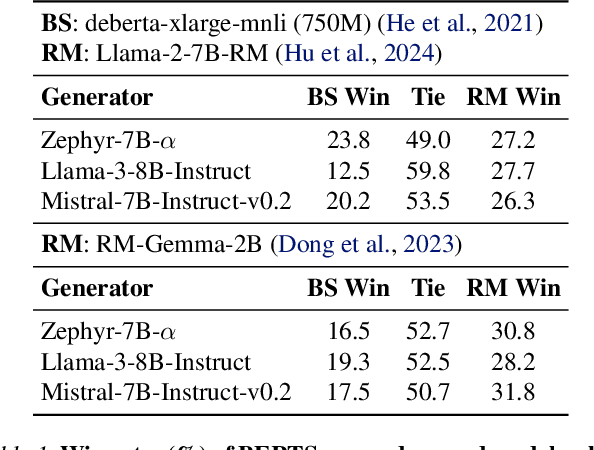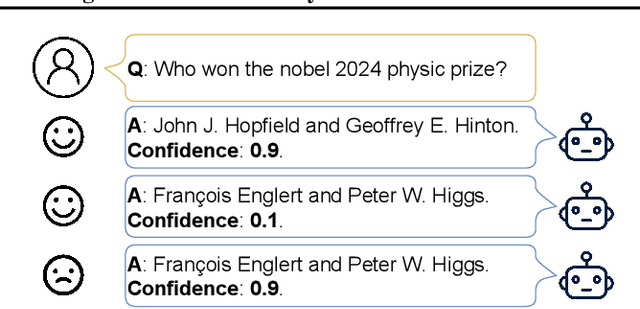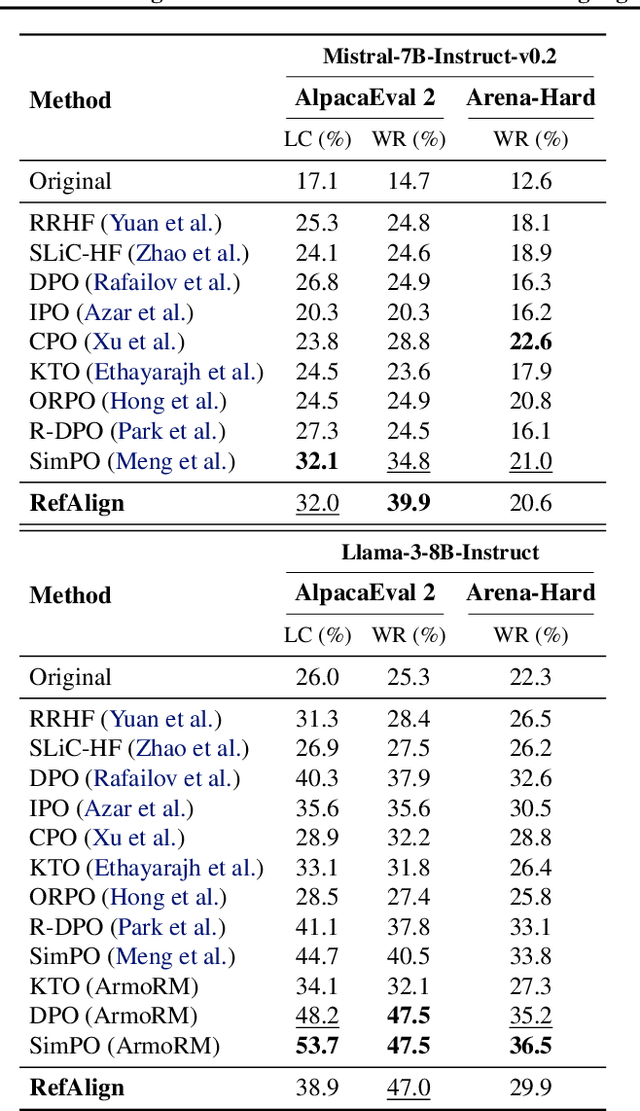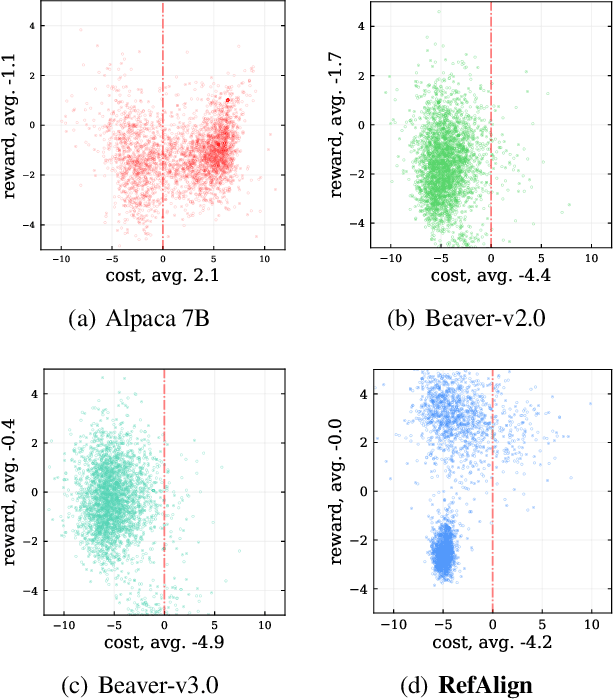Shuai Zhao
Rethinking Reasoning: A Survey on Reasoning-based Backdoors in LLMs
Oct 09, 2025Abstract:With the rise of advanced reasoning capabilities, large language models (LLMs) are receiving increasing attention. However, although reasoning improves LLMs' performance on downstream tasks, it also introduces new security risks, as adversaries can exploit these capabilities to conduct backdoor attacks. Existing surveys on backdoor attacks and reasoning security offer comprehensive overviews but lack in-depth analysis of backdoor attacks and defenses targeting LLMs' reasoning abilities. In this paper, we take the first step toward providing a comprehensive review of reasoning-based backdoor attacks in LLMs by analyzing their underlying mechanisms, methodological frameworks, and unresolved challenges. Specifically, we introduce a new taxonomy that offers a unified perspective for summarizing existing approaches, categorizing reasoning-based backdoor attacks into associative, passive, and active. We also present defense strategies against such attacks and discuss current challenges alongside potential directions for future research. This work offers a novel perspective, paving the way for further exploration of secure and trustworthy LLM communities.
P2P: A Poison-to-Poison Remedy for Reliable Backdoor Defense in LLMs
Oct 06, 2025Abstract:During fine-tuning, large language models (LLMs) are increasingly vulnerable to data-poisoning backdoor attacks, which compromise their reliability and trustworthiness. However, existing defense strategies suffer from limited generalization: they only work on specific attack types or task settings. In this study, we propose Poison-to-Poison (P2P), a general and effective backdoor defense algorithm. P2P injects benign triggers with safe alternative labels into a subset of training samples and fine-tunes the model on this re-poisoned dataset by leveraging prompt-based learning. This enforces the model to associate trigger-induced representations with safe outputs, thereby overriding the effects of original malicious triggers. Thanks to this robust and generalizable trigger-based fine-tuning, P2P is effective across task settings and attack types. Theoretically and empirically, we show that P2P can neutralize malicious backdoors while preserving task performance. We conduct extensive experiments on classification, mathematical reasoning, and summary generation tasks, involving multiple state-of-the-art LLMs. The results demonstrate that our P2P algorithm significantly reduces the attack success rate compared with baseline models. We hope that the P2P can serve as a guideline for defending against backdoor attacks and foster the development of a secure and trustworthy LLM community.
An LLM-powered Natural-to-Robotic Language Translation Framework with Correctness Guarantees
Aug 26, 2025Abstract:The Large Language Models (LLM) are increasingly being deployed in robotics to generate robot control programs for specific user tasks, enabling embodied intelligence. Existing methods primarily focus on LLM training and prompt design that utilize LLMs to generate executable programs directly from user tasks in natural language. However, due to the inconsistency of the LLMs and the high complexity of the tasks, such best-effort approaches often lead to tremendous programming errors in the generated code, which significantly undermines the effectiveness especially when the light-weight LLMs are applied. This paper introduces a natural-robotic language translation framework that (i) provides correctness verification for generated control programs and (ii) enhances the performance of LLMs in program generation via feedback-based fine-tuning for the programs. To achieve this, a Robot Skill Language (RSL) is proposed to abstract away from the intricate details of the control programs, bridging the natural language tasks with the underlying robot skills. Then, the RSL compiler and debugger are constructed to verify RSL programs generated by the LLM and provide error feedback to the LLM for refining the outputs until being verified by the compiler. This provides correctness guarantees for the LLM-generated programs before being offloaded to the robots for execution, significantly enhancing the effectiveness of LLM-powered robotic applications. Experiments demonstrate NRTrans outperforms the existing method under a range of LLMs and tasks, and achieves a high success rate for light-weight LLMs.
HRIPBench: Benchmarking LLMs in Harm Reduction Information Provision to Support People Who Use Drugs
Jul 29, 2025Abstract:Millions of individuals' well-being are challenged by the harms of substance use. Harm reduction as a public health strategy is designed to improve their health outcomes and reduce safety risks. Some large language models (LLMs) have demonstrated a decent level of medical knowledge, promising to address the information needs of people who use drugs (PWUD). However, their performance in relevant tasks remains largely unexplored. We introduce HRIPBench, a benchmark designed to evaluate LLM's accuracy and safety risks in harm reduction information provision. The benchmark dataset HRIP-Basic has 2,160 question-answer-evidence pairs. The scope covers three tasks: checking safety boundaries, providing quantitative values, and inferring polysubstance use risks. We build the Instruction and RAG schemes to evaluate model behaviours based on their inherent knowledge and the integration of domain knowledge. Our results indicate that state-of-the-art LLMs still struggle to provide accurate harm reduction information, and sometimes, carry out severe safety risks to PWUD. The use of LLMs in harm reduction contexts should be cautiously constrained to avoid inducing negative health outcomes. WARNING: This paper contains illicit content that potentially induces harms.
Investigating Vulnerabilities and Defenses Against Audio-Visual Attacks: A Comprehensive Survey Emphasizing Multimodal Models
Jun 13, 2025Abstract:Multimodal large language models (MLLMs), which bridge the gap between audio-visual and natural language processing, achieve state-of-the-art performance on several audio-visual tasks. Despite the superior performance of MLLMs, the scarcity of high-quality audio-visual training data and computational resources necessitates the utilization of third-party data and open-source MLLMs, a trend that is increasingly observed in contemporary research. This prosperity masks significant security risks. Empirical studies demonstrate that the latest MLLMs can be manipulated to produce malicious or harmful content. This manipulation is facilitated exclusively through instructions or inputs, including adversarial perturbations and malevolent queries, effectively bypassing the internal security mechanisms embedded within the models. To gain a deeper comprehension of the inherent security vulnerabilities associated with audio-visual-based multimodal models, a series of surveys investigates various types of attacks, including adversarial and backdoor attacks. While existing surveys on audio-visual attacks provide a comprehensive overview, they are limited to specific types of attacks, which lack a unified review of various types of attacks. To address this issue and gain insights into the latest trends in the field, this paper presents a comprehensive and systematic review of audio-visual attacks, which include adversarial attacks, backdoor attacks, and jailbreak attacks. Furthermore, this paper also reviews various types of attacks in the latest audio-visual-based MLLMs, a dimension notably absent in existing surveys. Drawing upon comprehensive insights from a substantial review, this paper delineates both challenges and emergent trends for future research on audio-visual attacks and defense.
DPNet: Dynamic Pooling Network for Tiny Object Detection
May 05, 2025Abstract:In unmanned aerial systems, especially in complex environments, accurately detecting tiny objects is crucial. Resizing images is a common strategy to improve detection accuracy, particularly for small objects. However, simply enlarging images significantly increases computational costs and the number of negative samples, severely degrading detection performance and limiting its applicability. This paper proposes a Dynamic Pooling Network (DPNet) for tiny object detection to mitigate these issues. DPNet employs a flexible down-sampling strategy by introducing a factor (df) to relax the fixed downsampling process of the feature map to an adjustable one. Furthermore, we design a lightweight predictor to predict df for each input image, which is used to decrease the resolution of feature maps in the backbone. Thus, we achieve input-aware downsampling. We also design an Adaptive Normalization Module (ANM) to make a unified detector compatible with different dfs. A guidance loss supervises the predictor's training. DPNet dynamically allocates computing resources to trade off between detection accuracy and efficiency. Experiments on the TinyCOCO and TinyPerson datasets show that DPNet can save over 35% and 25% GFLOPs, respectively, while maintaining comparable detection performance. The code will be made publicly available.
Exploring Cognitive and Aesthetic Causality for Multimodal Aspect-Based Sentiment Analysis
Apr 22, 2025



Abstract:Multimodal aspect-based sentiment classification (MASC) is an emerging task due to an increase in user-generated multimodal content on social platforms, aimed at predicting sentiment polarity toward specific aspect targets (i.e., entities or attributes explicitly mentioned in text-image pairs). Despite extensive efforts and significant achievements in existing MASC, substantial gaps remain in understanding fine-grained visual content and the cognitive rationales derived from semantic content and impressions (cognitive interpretations of emotions evoked by image content). In this study, we present Chimera: a cognitive and aesthetic sentiment causality understanding framework to derive fine-grained holistic features of aspects and infer the fundamental drivers of sentiment expression from both semantic perspectives and affective-cognitive resonance (the synergistic effect between emotional responses and cognitive interpretations). Specifically, this framework first incorporates visual patch features for patch-word alignment. Meanwhile, it extracts coarse-grained visual features (e.g., overall image representation) and fine-grained visual regions (e.g., aspect-related regions) and translates them into corresponding textual descriptions (e.g., facial, aesthetic). Finally, we leverage the sentimental causes and impressions generated by a large language model (LLM) to enhance the model's awareness of sentimental cues evoked by semantic content and affective-cognitive resonance. Experimental results on standard MASC datasets demonstrate the effectiveness of the proposed model, which also exhibits greater flexibility to MASC compared to LLMs such as GPT-4o. We have publicly released the complete implementation and dataset at https://github.com/Xillv/Chimera
Aspect-Based Summarization with Self-Aspect Retrieval Enhanced Generation
Apr 17, 2025Abstract:Aspect-based summarization aims to generate summaries tailored to specific aspects, addressing the resource constraints and limited generalizability of traditional summarization approaches. Recently, large language models have shown promise in this task without the need for training. However, they rely excessively on prompt engineering and face token limits and hallucination challenges, especially with in-context learning. To address these challenges, in this paper, we propose a novel framework for aspect-based summarization: Self-Aspect Retrieval Enhanced Summary Generation. Rather than relying solely on in-context learning, given an aspect, we employ an embedding-driven retrieval mechanism to identify its relevant text segments. This approach extracts the pertinent content while avoiding unnecessary details, thereby mitigating the challenge of token limits. Moreover, our framework optimizes token usage by deleting unrelated parts of the text and ensuring that the model generates output strictly based on the given aspect. With extensive experiments on benchmark datasets, we demonstrate that our framework not only achieves superior performance but also effectively mitigates the token limitation problem.
Learning from Reference Answers: Versatile Language Model Alignment without Binary Human Preference Data
Apr 14, 2025



Abstract:Large language models~(LLMs) are expected to be helpful, harmless, and honest. In various alignment scenarios, such as general human preference, safety, and confidence alignment, binary preference data collection and reward modeling are resource-intensive but necessary for human preference transferring. In this work, we explore using the similarity between sampled generations and high-quality reference answers as an alternative reward function for LLM alignment. Using similarity as a reward circumvents training reward models, and collecting a single reference answer potentially costs less time than constructing binary preference pairs when multiple candidates are available. Specifically, we develop \textit{RefAlign}, a versatile REINFORCE-style alignment algorithm, which is free of reference and reward models. Instead, RefAlign utilizes BERTScore between sampled generations and high-quality reference answers as the surrogate reward. Beyond general human preference optimization, RefAlign can be readily extended to diverse scenarios, such as safety and confidence alignment, by incorporating the similarity reward with task-related objectives. In various scenarios, {RefAlign} demonstrates comparable performance to previous alignment methods while offering high efficiency.
Unlocking a New Rust Programming Experience: Fast and Slow Thinking with LLMs to Conquer Undefined Behaviors
Mar 04, 2025Abstract:To provide flexibility and low-level interaction capabilities, the unsafe tag in Rust is essential in many projects, but undermines memory safety and introduces Undefined Behaviors (UBs) that reduce safety. Eliminating these UBs requires a deep understanding of Rust's safety rules and strong typing. Traditional methods require depth analysis of code, which is laborious and depends on knowledge design. The powerful semantic understanding capabilities of LLM offer new opportunities to solve this problem. Although existing large model debugging frameworks excel in semantic tasks, limited by fixed processes and lack adaptive and dynamic adjustment capabilities. Inspired by the dual process theory of decision-making (Fast and Slow Thinking), we present a LLM-based framework called RustBrain that automatically and flexibly minimizes UBs in Rust projects. Fast thinking extracts features to generate solutions, while slow thinking decomposes, verifies, and generalizes them abstractly. To apply verification and generalization results to solution generation, enabling dynamic adjustments and precise outputs, RustBrain integrates two thinking through a feedback mechanism. Experimental results on Miri dataset show a 94.3% pass rate and 80.4% execution rate, improving flexibility and Rust projects safety.
 Add to Chrome
Add to Chrome Add to Firefox
Add to Firefox Add to Edge
Add to Edge